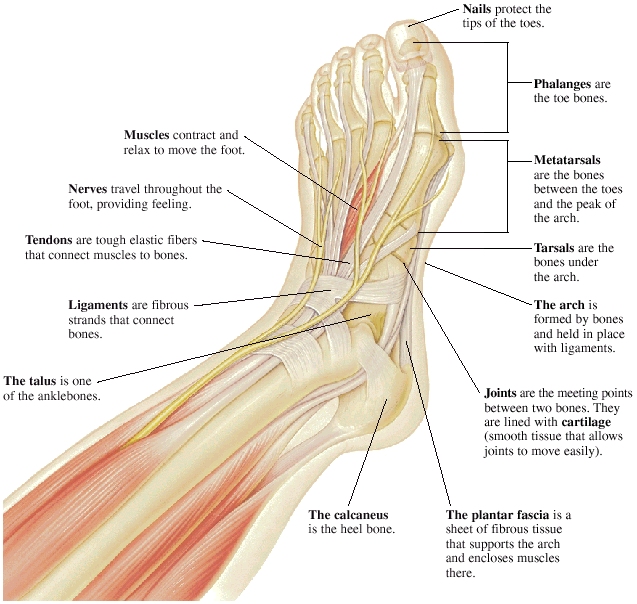
Foot, Parts of Anatomy and Physiology
The bottom part of the foot is the sole. The padded area on the bottom of the foot is known as the plantar aspect. The top part of your foot above the arch is the instep. In medical terms, the top of the foot is the dorsum or dorsal region. Anatomy of the Lower Leg Muscles. Bones .

Cutaneous afferent innervation of the human foot sole what can we
Human body Foot Foot The foot is the lowermost point of the human leg. The foot's shape, along with the body's natural balance-keeping systems, make humans capable of not only walking, but.
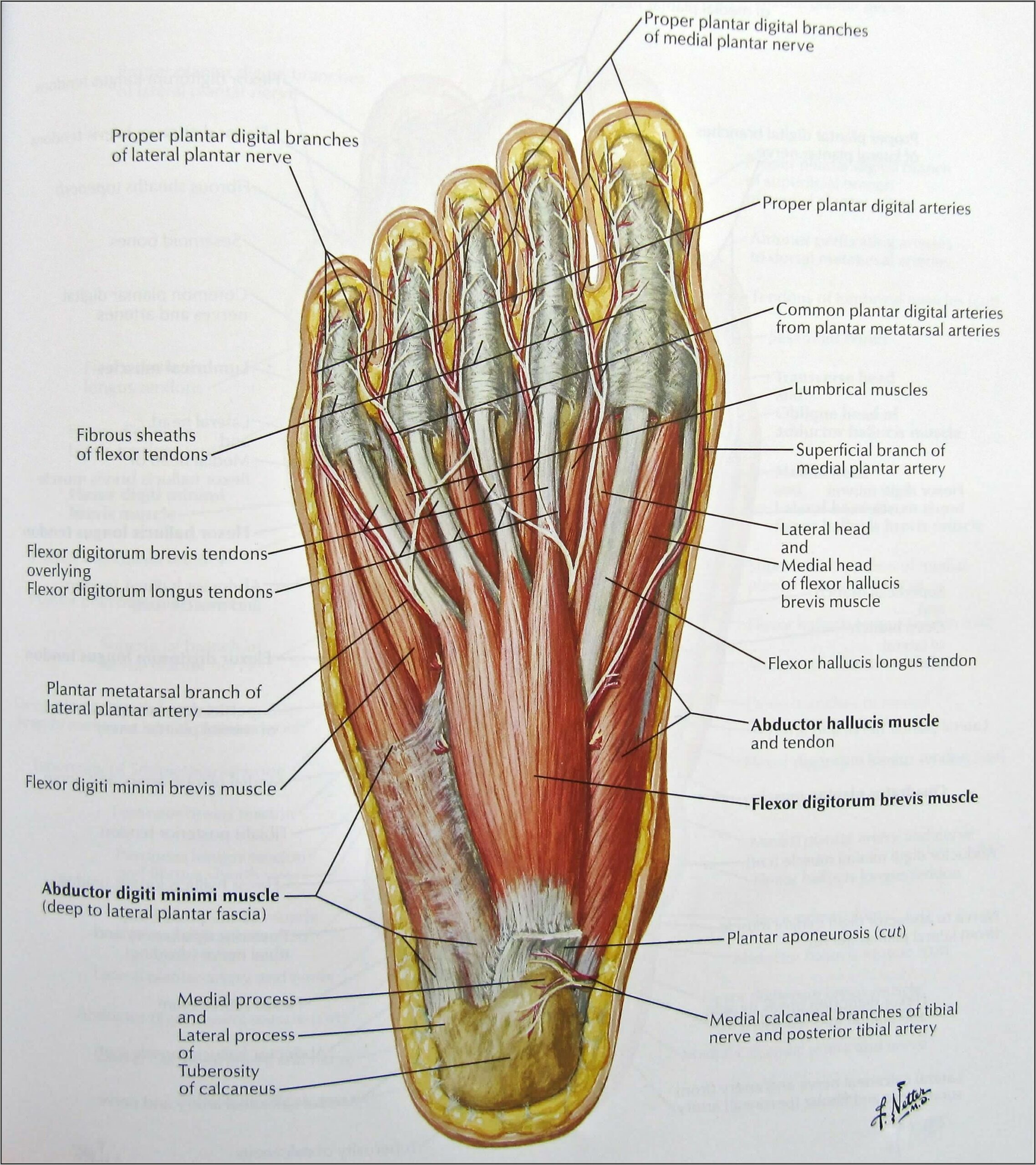
Medical Diagram Of Bottom Of Foot Diagrams Resume Template
The outsole of the foot is the part on the bottom of the shoe that touches the ground. A softer sole provides greater ability to absorb shock. The bottom, back part of the shoe is called the heel. The heel gives the shoe elevation. A higher heel places more pressure on the balls of the feet and toes.

Foot Anatomy 101 A Quick Lesson From a New Hampshire Podiatrist Nagy
The midfoot is a pyramid-like collection of bones that form the arches of the feet. These include the three cuneiform bones, the cuboid bone, and the navicular bone. The hind foot forms the heel and ankle. The talus bone supports the leg bones (tibia and fibula), forming the ankle. The calcaneus (heel bone) is the largest bone in the foot.
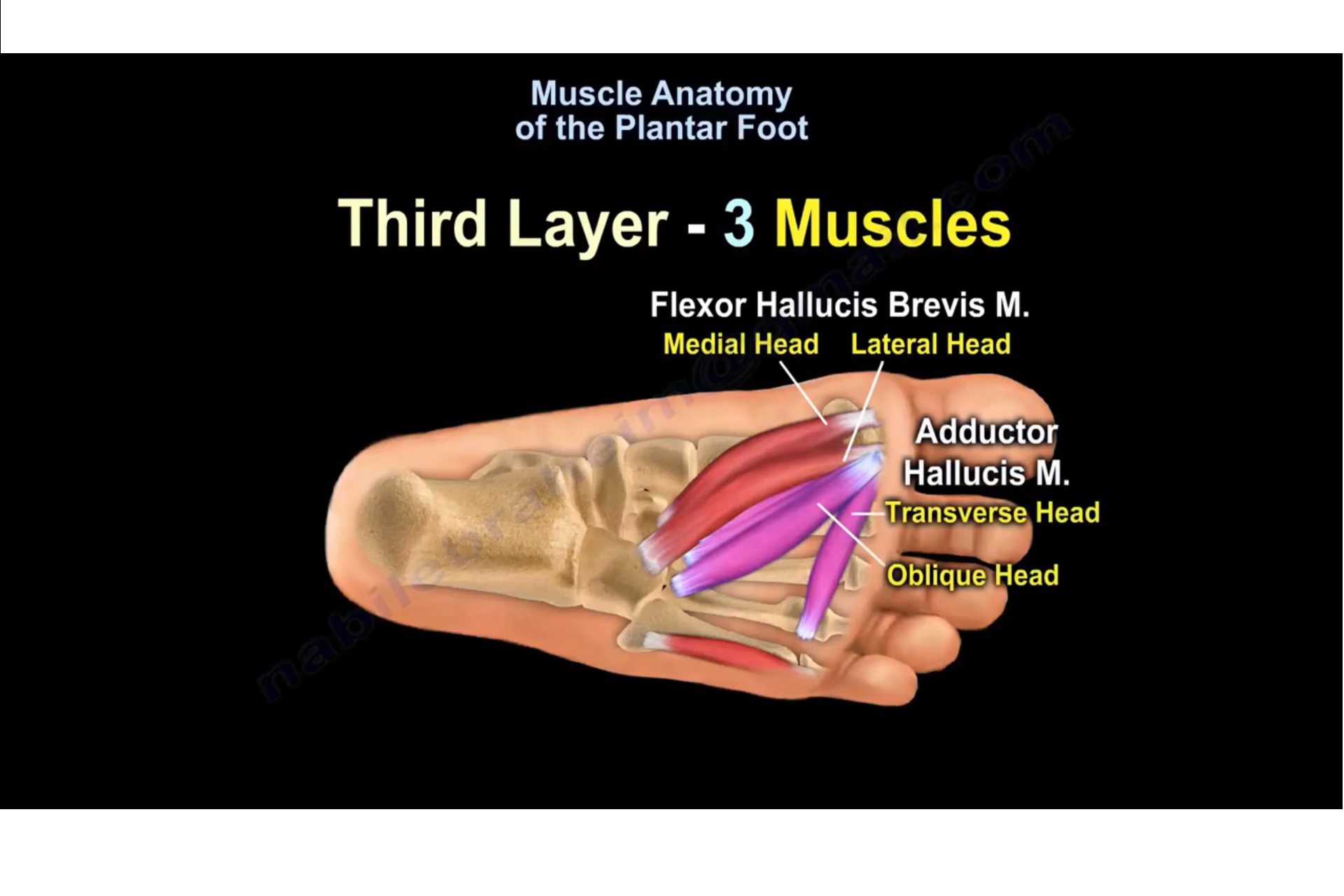
Muscle Anatomy Of The Plantar Foot —
Generally, the three groups are the: tarsals metatarsals phalanges Tarsals The tarsals are a group of seven bones close to the ankle. The proximal tarsal bones are the talus and the calcaneus,.
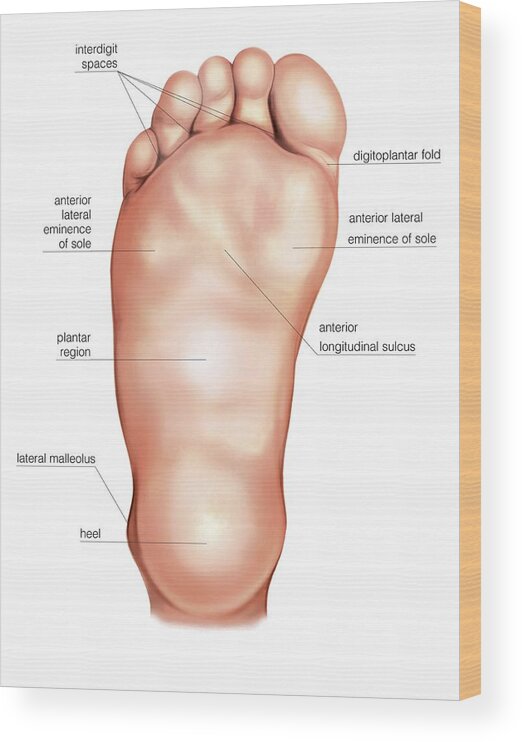
Anatomy Regions Of The Right Foot Wood Print by Asklepios Medical Atlas
It is made up of over 100 moving parts - bones, muscles, tendons, and ligaments designed to allow the foot to balance the body's weight on just two legs and support such diverse actions as running, jumping, climbing, and walking. Because they are so complicated, human feet can be especially prone to injury.

Notes on Anatomy and Physiology Using Imagery to Relax the Weight
The bottom of your foot is connected with your pelvic area. Even the basics can lead you to a very simple self-treatment. The right foot is associated with the right part of the body and left foot is associated with the left side of the body.
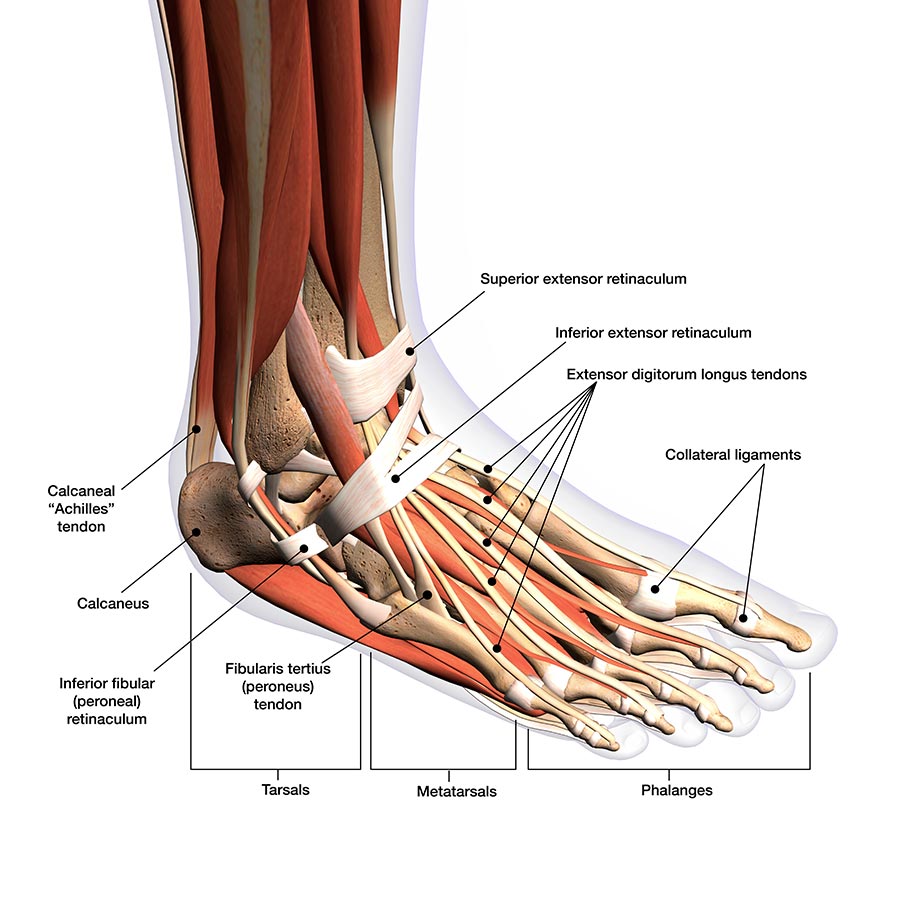
Foot and ankle anatomy, conditions and treatments
Ball-of-foot pain. Pain in the ball of the foot, or at the front of the foot near the toes, has many potential causes. Muscle strains and sprains, minor overuse injuries, and tense muscles can all.
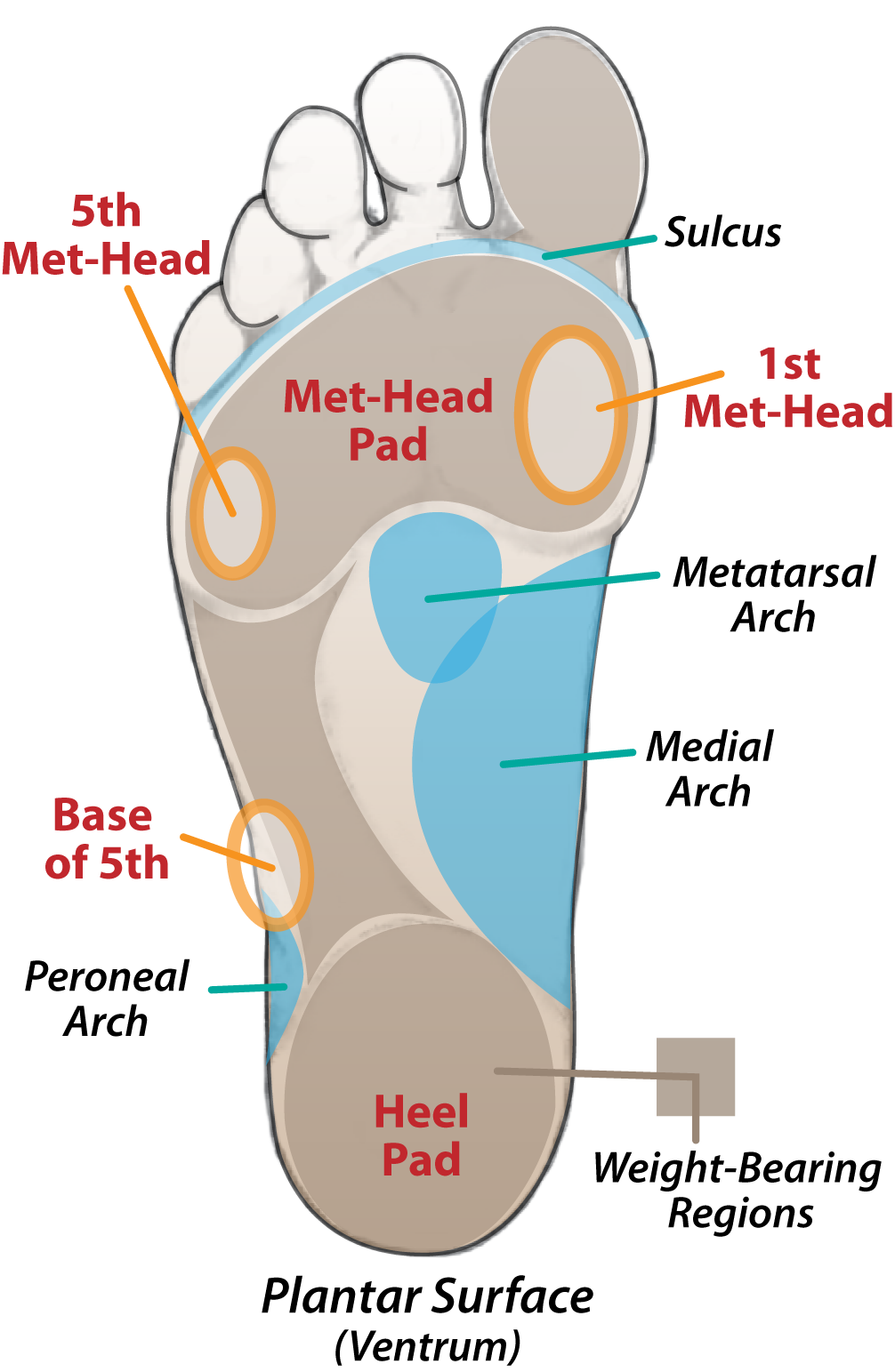
Plantar
Introduction A solid understanding of anatomy is essential to effectively diagnose and treat patients with foot and ankle problems. Anatomy is a road map. Most structures in the foot are fairly superficial and can be easily palpated. Anatomical structures (tendons, bones, joints, etc) tend to hurt exactly where they are injured or inflamed.

Diagram Of Your Foot
The ankle joint is a hinge joint that allows for dorsiflexion (bending up) and plantarflexion (bending down) of the foot. Sesamoid Bones There are two of these small, ovoid-shaped bones located beneath the first metatarsal on the plantar (surface) of the foot. It's embedded in a tendon at the head (the closest part to the big toe) of the bone.
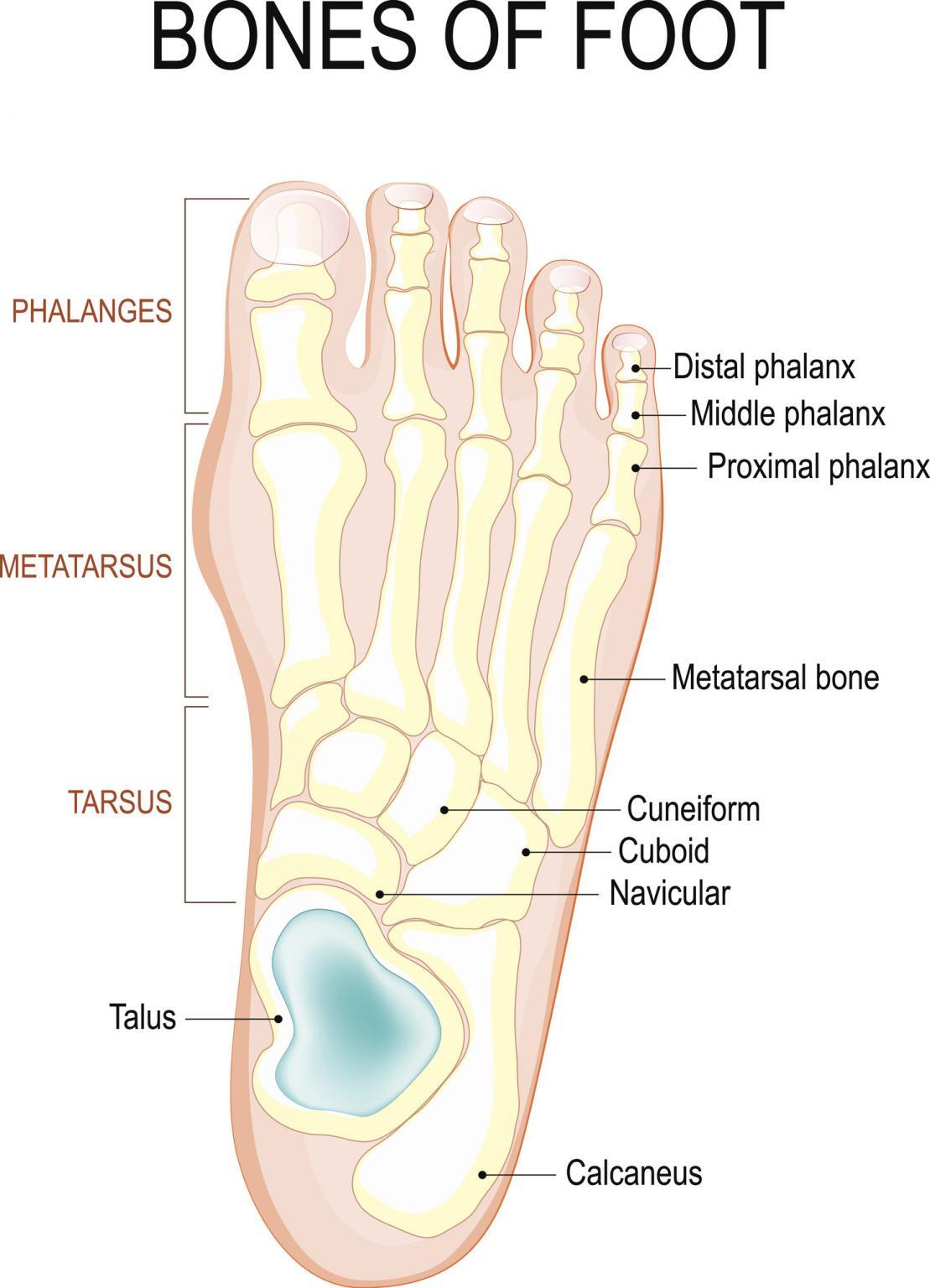
What is Metatarsalgia? JOI Jacksonville Orthopaedic Institute
When to See a Provider Diagnosis Treatment Prevention Pain on the bottom of your foot can be caused by many things from ill-fitting shoes to activities like long-distance running or walking. For jobs that require long hours on your feet, bottom-of-the-foot pain is an occupational hazard.

Diagram Of Your Foot
Summary The foot is an intricate part of the body, consisting of 26 bones, 33 joints, 107 ligaments, and 19 muscles. Scientists group the bones of the foot into the phalanges, tarsal bones,.

SURFACE FORM LANDMARKS OF THE FOOT
Heel. The heel is the portion of the human body that lies at the bottom-rear part of each foot. Its exterior shape is formed by the calcaneus, also known as the heel bone. The heel bone is the.
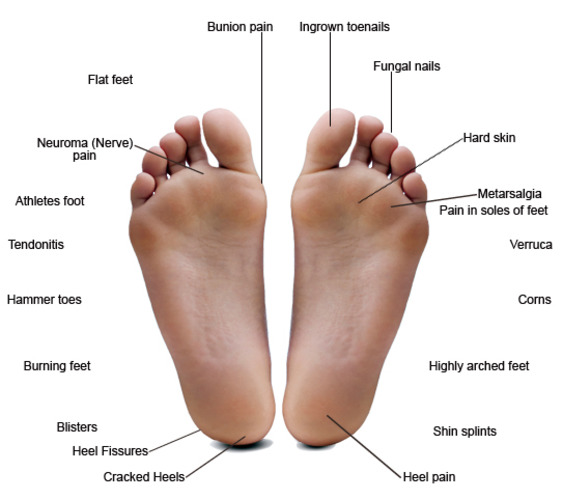
Common Foot Problems — Hawaii Podiatry
Rest Cold packs Anti-inflammatory medication, such as ibuprofen Proper stretching before activity Proper footwear or shoe inserts Corticosteroid injections Surgery (for more severe, prolonged conditions) What is a corn? Corns are yellowish, callus growths that develop on top of the toes. Corns develop because of abuse or stress.

Anatomy of the Foot Comprehensive Orthopaedics
LABELED DIAGRAMS. Figure 1. Sections and Bones of the Foot A. Lateral (Left) B. Anterior (Right) Figure 2. Compartments of the Foot A. Cut Section through Mid-Foot. Figure 3. First Layer of the Foot A. Plantar View of Right Foot. Figure 4. Second Layer of the Foot A. Plantar View of Right Foot.

The bones in the foot inferior view (Picture illustrated from Thieme
The midfoot is made up primarily of arches of the feet. The arch is made up of the three cuneiform bones, the cuboid bone, and the navicular bone. The arch of the foot plays a key role in weight-bearing and stability. In the middle of the foot, you'll also find the plantar fascia, a band of fascia along the bottom of the foot.